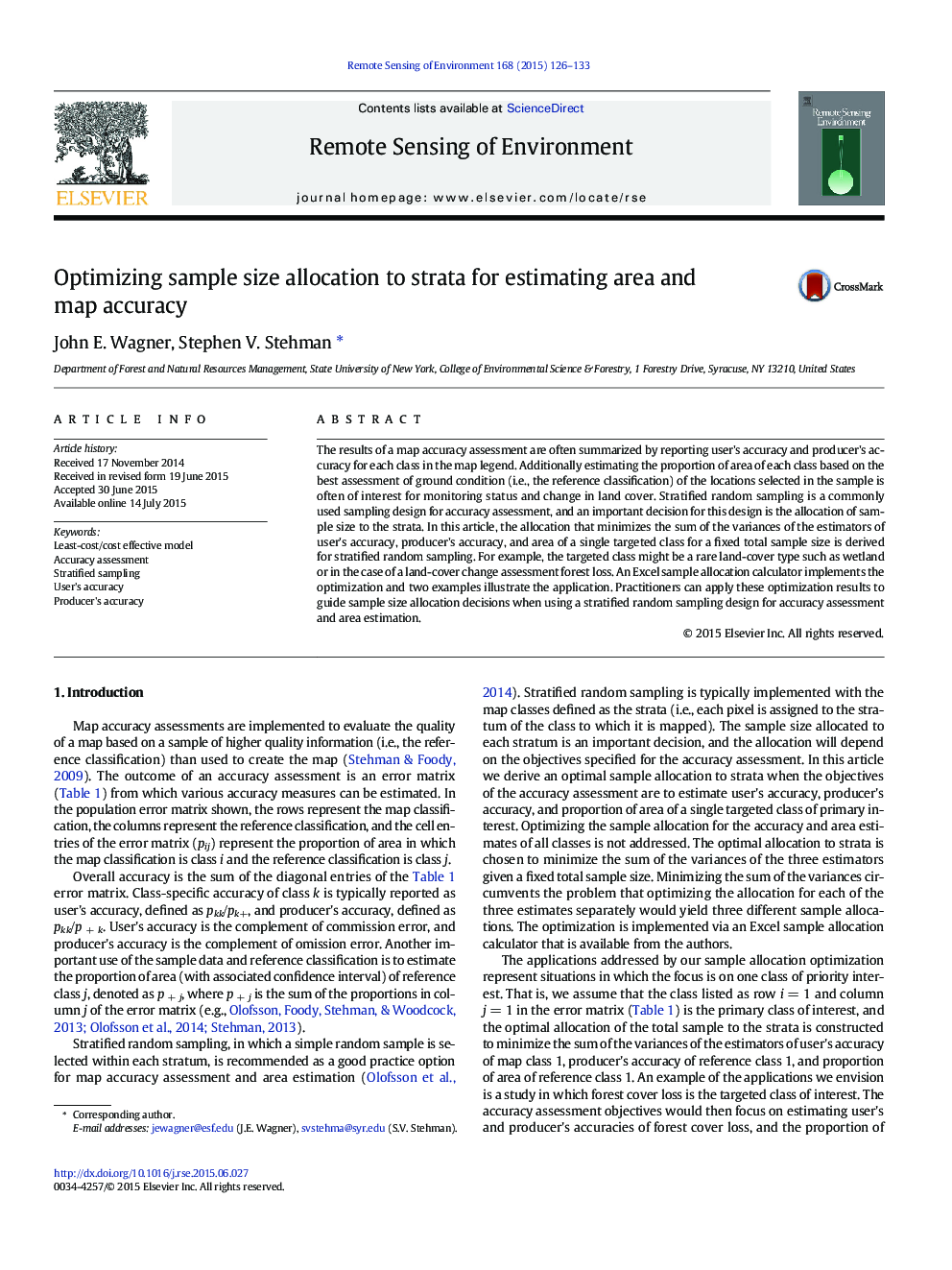| Article ID | Journal | Published Year | Pages | File Type |
|---|---|---|---|---|
| 4458811 | Remote Sensing of Environment | 2015 | 8 Pages |
•Map accuracy assessment yields estimates of accuracy and area.•Sample size allocation to strata that optimizes sum of variances is presented.•Optimization is based on a least-cost/cost-effective model.•An Excel sample allocation calculator is available from authors.
The results of a map accuracy assessment are often summarized by reporting user's accuracy and producer's accuracy for each class in the map legend. Additionally estimating the proportion of area of each class based on the best assessment of ground condition (i.e., the reference classification) of the locations selected in the sample is often of interest for monitoring status and change in land cover. Stratified random sampling is a commonly used sampling design for accuracy assessment, and an important decision for this design is the allocation of sample size to the strata. In this article, the allocation that minimizes the sum of the variances of the estimators of user's accuracy, producer's accuracy, and area of a single targeted class for a fixed total sample size is derived for stratified random sampling. For example, the targeted class might be a rare land-cover type such as wetland or in the case of a land-cover change assessment forest loss. An Excel sample allocation calculator implements the optimization and two examples illustrate the application. Practitioners can apply these optimization results to guide sample size allocation decisions when using a stratified random sampling design for accuracy assessment and area estimation.
